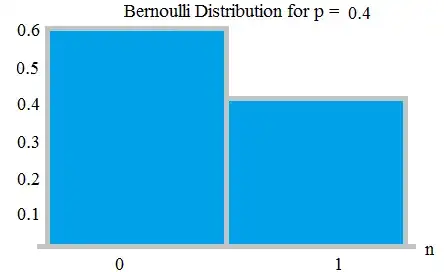I'm trying to quantify the skewness of the distribution of random integer variable, generated in the interval from 1 to 15, with a function that I wrote in C++.
Here are the generated values:
Tested for 5000 elements, with results:
level 1: 2561 level 6: 70 level 11: 4
level 2: 1225 level 7: 44 level 12: 1
level 3: 607 level 8: 17 level 13: 0
level 4: 312 level 9: 9 level 14: 0
level 5: 147 level 10: 3 level 15: 0
From what I observe I can qualify that the distribution has positive skewness, as most of the generated elements (97%) are within the interval 1 to 5.
To quantify the skewness, I'm trying to calculate the Pearson's moment coefficient of skewness using this relation:
where X - random variable, mu - mean, sigma - standard deviation and E - expectation operator.
I understand that I have to subtract the mean from each random variable, divide it by the standard deviation and raise to the 3-rd power, however, I'm having difficulties understanding what is the meaning of the E operator?
Does it mean that I need to simply divide by the total number of values or something else?
Edit:
Is there an easier way to quantify skewness?
P.S. apologies for the lengthy post I just wanted to show research effort.
